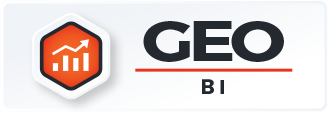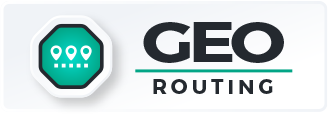- Blog
- Geo Routing
- Multi Stop Route Planner: Optimize Complex Routes with Bulk Stops and Smart Sequencing
Whether you’re managing deliveries, planning field visits, or coordinating a long-haul trip, routing more than a few stops can quickly become a logistical headache. That’s where a multi stop route planner comes in. These tools automatically sequence stops, minimize mileage, and streamline your workflow—no more guessing or backtracking.
This article explores the features and benefits of advanced multi-stop planning tools, including apps for drivers, bulk stop mapping, commercial route optimization, and long-distance logistics. If you need to plan 10, 50, or 500 stops, this is your guide.
What Is a Multi Stop Route Planner?
A multi stop route planner is a software solution that calculates the most efficient way to visit multiple locations in a single trip. Unlike basic mapping tools, these planners handle dozens (or hundreds) of addresses at once, automatically determining the optimal order to reduce drive time and fuel usage.
Common users include:
- Delivery drivers and couriers
- Sales and service teams
- Fleet managers and dispatchers
- Logistics and freight companies
These platforms simplify route building, improve on-time performance, and reduce operational complexity—especially when planning routes with tight time windows or multiple vehicles.
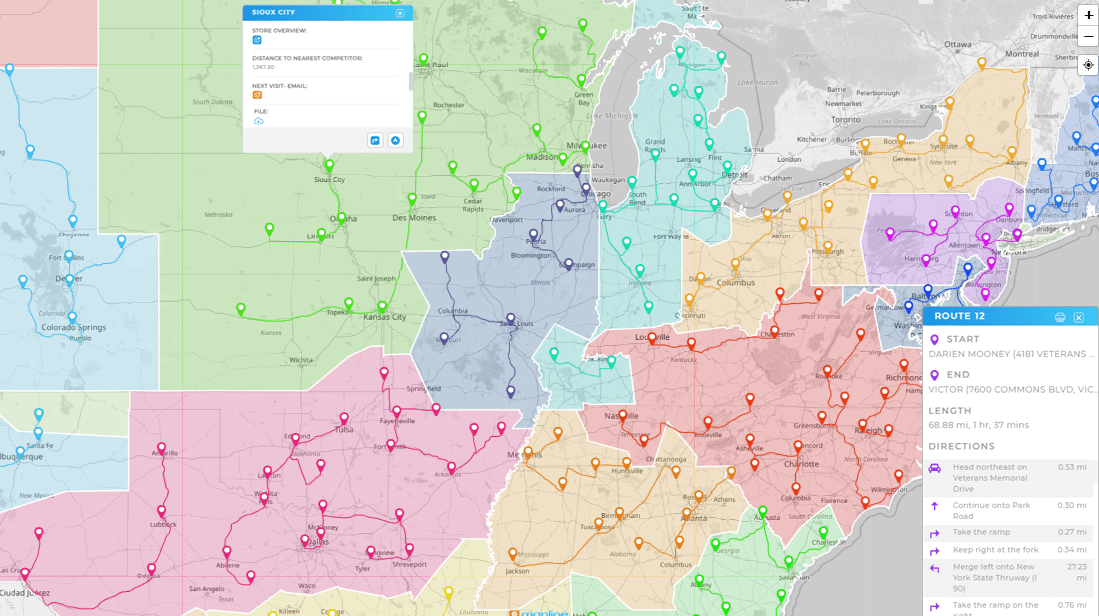

Pro Tip: Mapline automatically clusters nearby stops before routing, so you spend less time sorting and more time moving. This proximity-based approach creates faster, smarter routes—perfect for dense urban deliveries.
Key Features of the Best Multi-Stop Planners
Not all route planners are created equal. The best multi-stop planners go beyond basic mapping to deliver real-time flexibility, predictive insights, and smarter route intelligence. Look for tools that can handle bulk stop imports, auto-group nearby addresses, and optimize based on distance, time, or custom constraints.
Advanced planners also provide live tracking and instant re-routing so you can adapt quickly when schedules change. Together, these features save hours of manual planning while cutting fuel costs and improving customer satisfaction. In short, a true multi-stop planner doesn’t just map your routes—it transforms how you manage them.
Route Planner with Multiple Stops
A core feature is the ability to plan a route with many stops. Good tools allow you to:
- Import addresses in bulk from spreadsheets or CRMs
- Automatically geocode and validate addresses
- Reorder stops for optimal travel time
This is ideal for delivery teams, field technicians, or long-distance drivers with multiple appointments.

Route Optimizer App
A route optimizer app like Mapline’s Geo Routing brings this power to mobile, letting drivers navigate, update stop statuses, and receive real-time route changes. Core features often include:
- Turn-by-turn navigation with dynamic rerouting
- Stop completion check-ins and notes
- Live sync with dispatcher platforms
This keeps drivers productive and enables dispatchers to monitor route progress.
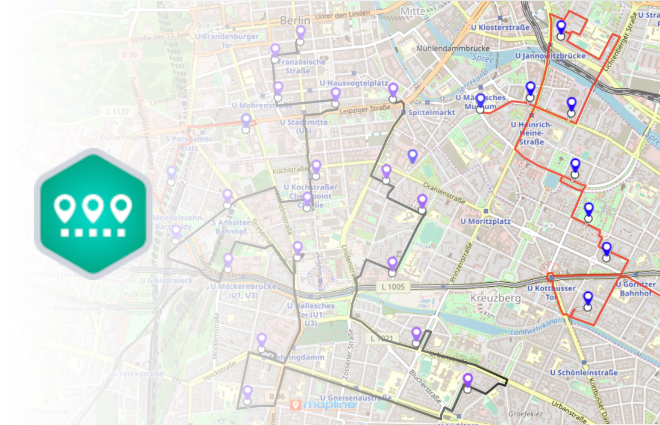
Delivery Mapping and Commercial Routing Tools
For delivery and logistics teams, efficient mapping isn’t just convenient—it’s the backbone of daily operations. Multi-stop planners designed for commercial use offer industry-specific tools such as delivery time windows, load balancing, and proof-of-delivery tracking. These features go far beyond standard consumer navigation apps, ensuring that drivers stay on schedule and businesses meet customer expectations.
By integrating routing with commercial needs, companies can reduce fuel costs, limit overtime, and streamline dispatch coordination. The result is a smarter, more scalable logistics workflow that adapts to the unique pressures of high-volume delivery networks.
Delivery Route Mapping
Delivery route mapping tools focus on short-distance, high-density routing. They’re ideal for food delivery, parcel drop-offs, and local courier services. Key features include:
- Zip code grouping and stop clustering
- Time window prioritization
- Driver shift scheduling with route assignment
Paired with fleet dashboards, these tools streamline same-day and next-day delivery logistics.
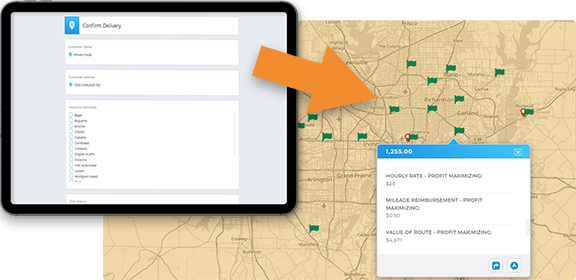
Commercial Route Planner for Fleets
A commercial route planner is built for larger fleets and long-haul logistics. These tools help teams:
- Map thousands of miles and hundreds of stops
- Factor in vehicle restrictions (e.g., height, weight)
- Track compliance and safety metrics
Combined with telematics systems, they help manage fuel, driver hours, and coverage areas across multiple regions.
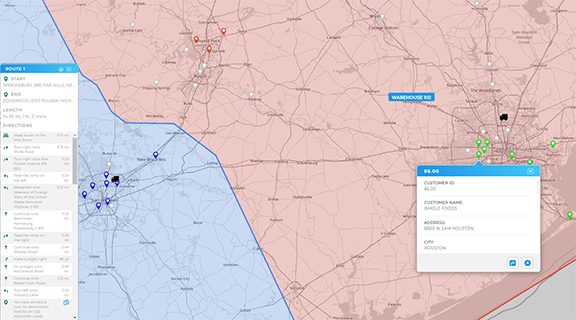
Optimizing Routes at Scale: Bulk Mapping and Address Grouping
For users managing hundreds or even thousands of stops, speed and precision are non-negotiable. Bulk mapping features make it easy to import large datasets, instantly plot them, and create routes without manual entry. Advanced planners also offer address grouping and clustering, which automatically segment stops by proximity to reduce complexity and cut down on optimization time.
This automation not only ensures routes are efficient but also frees teams from repetitive work that slows operations. By combining bulk mapping with intelligent grouping, businesses can scale delivery operations seamlessly while maintaining accuracy and efficiency.
| Feature | Key Benefit |
|---|---|
| Multi-Address Route Planner | Handles bulk address entry and geolocation for large-scale routing needs |
| Address Grouping Tool | Clusters stops into efficient zones or territories for better distribution |
| Bulk Stop Mapping | Imports hundreds of locations at once for instant routing and sequencing |
These capabilities are essential for teams managing seasonal spikes, event logistics, or route testing across market expansions.
Long-Haul and Real-World Route Planning
Planning cross-state or regional routes requires more than just connecting points on a map. Long-haul drivers need route planners that account for real-world challenges such as mandatory rest breaks, fueling stations, traffic patterns, and tight delivery windows. The best tools allow you to factor in road restrictions, weigh station requirements, and vehicle-specific limitations like height or weight. They also give dispatchers the ability to adjust assignments in real time, ensuring commitments stay on track even when delays occur. By combining accurate mapping with real-world logistics, these planners help carriers minimize downtime, reduce risk, and keep customers satisfied.
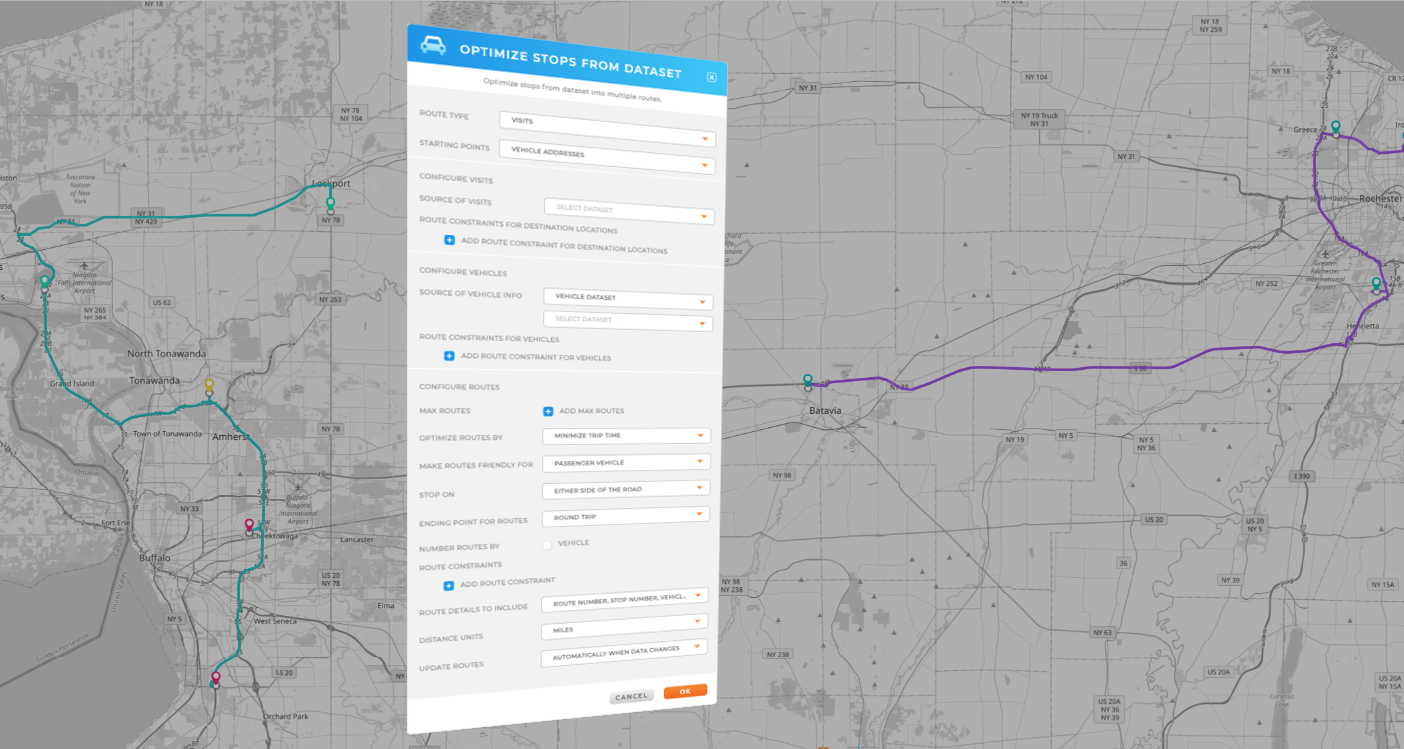
Long-Haul Stop Planning
Long-haul stop planning tools allow teams to:
- Schedule rest breaks, fuel stops, and overnight stays
- Plan multi-day routes with state-specific regulations
- Sequence deliveries based on hours-of-service limits
By factoring in more than just mileage, these tools help reduce fatigue, prevent fines, and improve delivery accuracy.
Map Multiple Stops with Real-World Constraints
Traditional maps don’t show you traffic, closures, or commercial vehicle restrictions. Tools that map multiple stops with real-world route planning adjust for:
- Road conditions, tolls, and delivery access
- Urban density and parking limitations
- Driver-specific preferences or territory boundaries
This ensures your routes are not just optimized—but practical and executable.
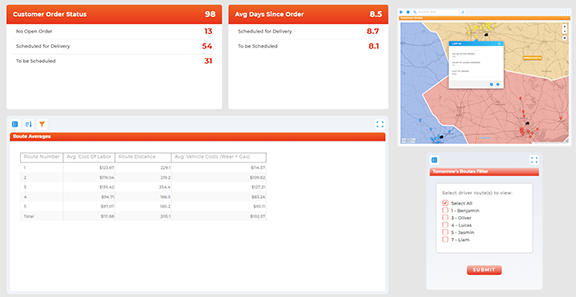
It’s used to create efficient routes for multiple addresses in a single trip, saving time, fuel, and effort for delivery, service, or travel purposes.
The best planners offer bulk upload, address validation, optimization logic, driver assignment, mobile sync, and real-time updates.
Yes. Most platforms allow you to upload CSV files, paste address lists, or connect directly to a CRM for mass routing.
Long-haul tools consider rest stops, drive time limits, fuel, and multi-day routing, while local tools focus more on dense delivery areas and rapid sequencing.
No. It’s also useful for field sales, home services, mobile clinics, non-profits, or any team that visits multiple locations daily.






